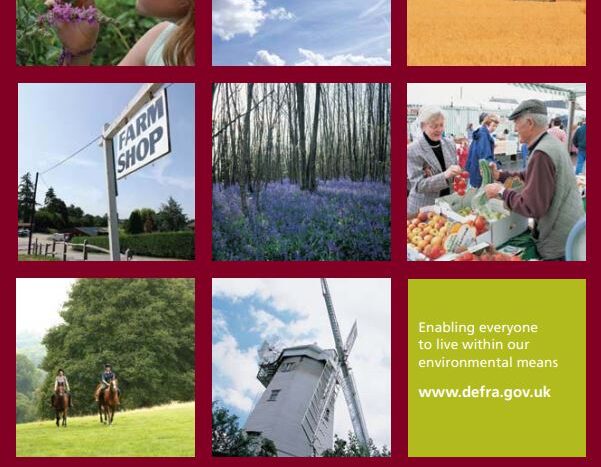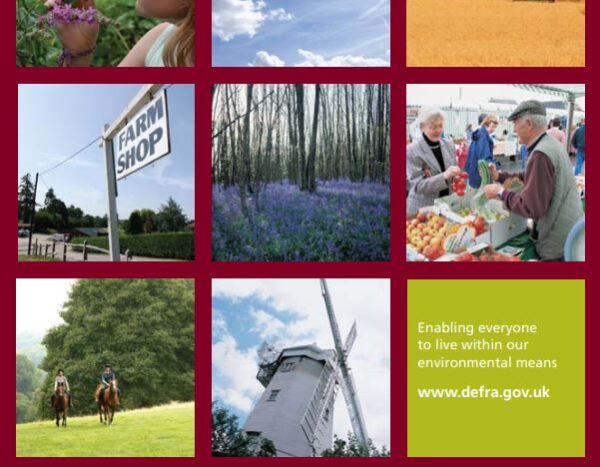


In January 2008 Petroleum Review, John Baldwin, MD of CNG Services Ltd
(www.cngservices.co.uk) made the case for support for renewable methane injected
into the gas grid. We asked John for an update.
The UK Government has set itself a legally binding target of meeting 15% of the UK’s
total energy requirements by 2020 from renewable sources. To get to 15%, one scenario
is for 35% of electricity, 10% of transport and 14% of heat to be from renewable sources.
Whilst the main sources of renewable energy are wind, biomass and liquid biofuels,
renewable methane – biomethane – made from waste in an anaerobic digester (AD) is
increasingly seen as an attractive option.
The driver for AD’s is the disposal of waste to avoid fugitive emissions of methane and is
strongly supported by DEFRA (Department for Environment, Food and Rural Affairs) as
set out in their Shared Goals Statement published in February 2009
(http://www.defra.gov.uk/environment/waste/ad/pdf/ad-sharedgoals-090217.pdf).
Unusually for Government, DEFRA are saying that AD is the ‘technology of choice’ for
disposal of organic matter.
Financial support to renewable methane
Producers of biomethane have been able to earn double Renewable Obligation
Certificates (ROCs) or Renewable Transport Fuel Obligation Certificates (RTFO’s).
Now, as a result of the Energy Act 2008 there will be a premium paid to biomethane
injected into the gas grid (known as BtG). DECC (Department of Energy and Climate
Change) has indicated it will consult on the level of the BtG premium in summer 2009
with the incentive introduced from April 2011. The REA (Renewable Energy Association)
has estimated that there should be a premium of around 100 – 150 p/therm for BtG (over
the normal gas price) to reward the improved environmental outcome and create this as
a viable alternative to local electricity generation.
In 2008, National Grid commissioned Ernst & Young to look at the potential for BtG to
dilute fossil natural gas and be a means to get renewable heat to customers. The results
indicated that around 50% of UK domestic customer demand in 2020 could be provided
by biomethane delivered via the existing gas networks
(http://www.nationalgrid.com/corporate/Media+Centre/Press+Releases/Global+Press+R
eleases/020209.htm)
The recent Russia – Ukraine row and the National Grid forecast in its 2008 Ten Year
Statement that, by 2020, the UKCS will supply less than 20% of UK gas needs has
added impetus to the development of BtG. National Grid’s analysis showed that by 2020
the waste disposal problem could be a valuable resource equal to UKCS gas flows. The
Netherlands has a target for 10% dilution of its fossil methane by 2020 which is the sort
of realistic target that could be adopted in the UK.
But the key driver remains climate change. The Government funded but independent
monitor of progress towards the 2020 target, The Committee of Climate Change
(www.theccc.org.uk) is supportive of BtG because the use of the gas grid to displace
fossil natural gas gives a very good outcome David Joffe of TCCC says “Because this
target is measured on a final energy basis, from the same biogas resource you could get
around 2.5x as much contribution to meeting the target by using it for heat or CHP (or as
a transport fuel) rather than on-site electricity generation only”
A further benefit of BtG over electricity generation is that, by 2020, when it is windy
around 80% of UK electricity will come from wind…..and when there is no wind the
shortfall will be made up by generation from gas fired combined cycle gas turbines.
Adopting the BtG option for renewable methane means that, in effect, the biomethane
energy can be stored as gas (actually it will be gas molecules from Norway or Qatar that
go into store) and brought out when the wind falls….a much more flexible solution than
local generation which is on all the time (even during the windy periods when it will not
be needed). This effectively means that electricity is stored as gas (with ability to
generate when its not windy) – much more efficient that, for example, compressing air or
pumping water up hill, both which give rise to huge energy losses.
Gas distribution company support
DECC and the gas distribution companies (GDNs) have been working on the detailed
processes to facilitate BtG and no material technical issues have been identified. To
meet the safety requirements for entry into the natural gas grid, the raw biogas from the
anaerobic digester has to be dried, any H2S and CO2 removed and a smell added. That
is straightforward with many proven plants in operation in Europe. In addition, around
4% propane needs to be added to match the calorific value of grid gas. UK gas industry
contractors and manufacturers are gearing themselves up to bring EU technololgy to the
UK.
The GDN’s are all supportive of BtG as their business is transporting natural gas to
domestic customers. Subject to Ofgem approval they will be able to make the necessary
investments required to facilitate widespread injection of biomethane. This can include
adjustments to gas regulators to allow higher pressures in the summer and installation of
small gas compressors to pump biomethane from local medium pressure pipelines
(operating at 1 bar) to higher pressure ones with more capacity to absorb gas volumes.
One important area relates to the large number of 25 year PFI deals for local authority
waste that are currently being progressed. There is a concern that large scale
incineration of organic waste at 25% efficiency will take place with any AD biogas used
to generate electricity (with no use of waste heat). An early indication by the Government
of the BtG premium is required if we are to utlise local authority organic waste as a
valuable source of BtG and to avoid a 25 year regret. Generally however, developments
are very positive and we are seeing the birth of a BtG industry in the UK.

Please fill in the contact form below and a member of the team will be in touch with you shortly.